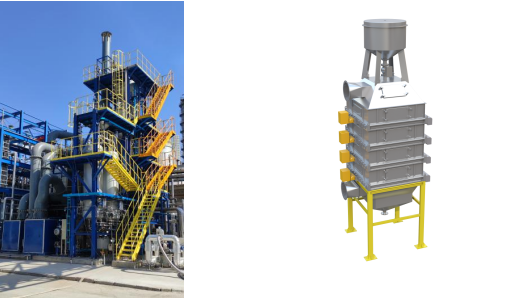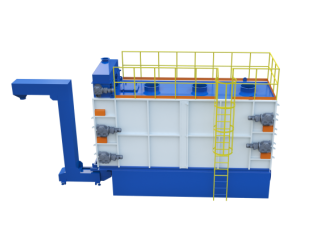VOC
The VOCs dynamic adsorption technology system adopts an adjustable multi-layer adsorption structure and a unique dynamic adsorption design, effectively addressing the pain points of fixed adsorption filter bed, blockage, ditch flow, and other treatment issues. It maintains stable and efficient adsorption efficiency with a high filler utilization rate. The emission concentration can be customized to achieve low operating costs and high economic benefits.
Technical features:
1. Multi-layer dynamic adsorption achieves high processing efficiency by counterflow direction of the adsorption filler against the air flow, enabling sequential absorption of contaminated components. The impact of the air flow on the adsorption filler creates a peristaltic or fluid state, promoting thorough gas-solid interface mixing and ensuring sufficient contact for shortened adsorption time and improved efficiency.
2. 100% utilization of adsorption capacity: Dynamic adsorption makes full use of the adsorption capacity of the filler, ensuring that the discharged adsorption filler reaches a saturation state. This not only reduces the frequency of regeneration and saves renewable energy consumption but also enhances the concentration of recycled vapor and improves the recovery rate of pollutants.
3. With a "stable standard" protective layer: the filler of the adsorption layer is being batch added and replaced sequentially, saturated filler is being timely discharged, stable adsorption efficiency, ensuring efficient operation of the filter bed during its service cycle; the topmost adsorption filler has the highest transfer and adsorption power, it can effectively capture targeted substances, ensuring that the outlet concentration meets design specifications.
4. Emission concentration can be designed: timely adjust the filler dosage can be designed according to the intake concentration and fluctuation characteristics to achieve designable emission concentration; combined with real time the gas load changes monitored by the system, the number of adsorption layers can be adjusted to reduce the operating resistance and reduce the operating cost.
5. Data decision control: The inlet and outlet of each level of the adsorption filter layer are equipped with control points for adsorption data testing, which provide a data-driven basis for adjusting operational parameters to achieve optimal processing efficiency.
6. The buffer capacity is increased by 50%: the equipment is designed to be adaptable to environments with unstable production and significant fluctuations in exhaust gas concentration, ensuring immediate usability without the need for preheating or advance preparation.






